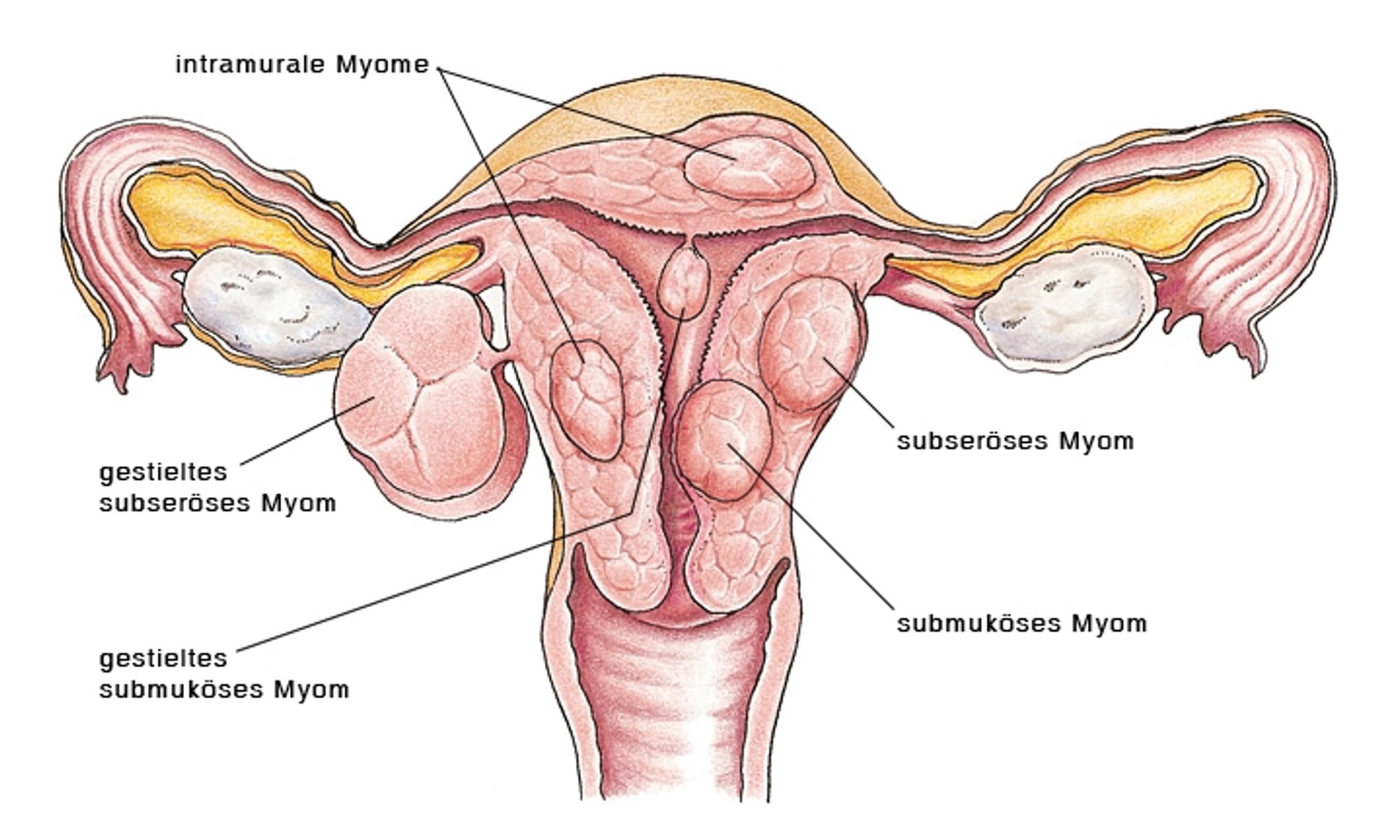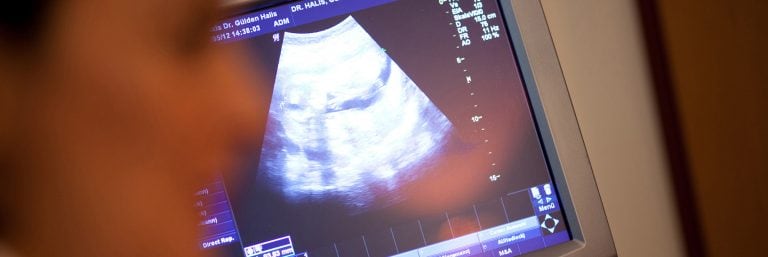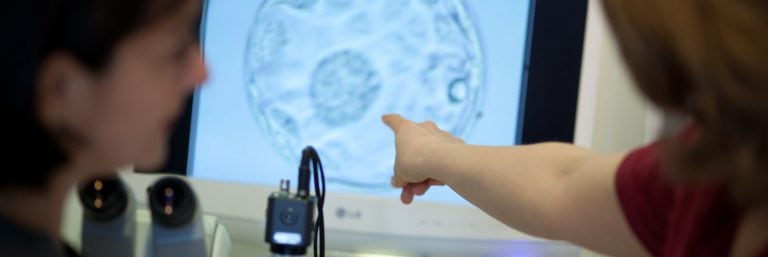What are fibroids?
The term “myoma” was first used by the German pathologist Rudolf Virchow. Uterine fibroids are benign tumours of the uterus. They consist of connective tissue, blood vessels and smooth muscle. Intramural or submucosal fibroids can be an obstacle to fertility.
Whether and to what extent fibroids cause discomfort depends on their size and location:
Intramural fibroids
(in the muscle – about 50% of all fibroids): They are probably the most common fibroids and often cause cramping pain, especially during menstruation. If they grow to a massive size, they can also cause constipation and problems with urination due to pressure on neighboring organs. They can play a role in infertility.
Subserous fibroids
(under the “skin” – approx. 35% of all fibroids): They have little to no effect on menstruation, but can cause acute pain, especially if it is a pedunculated subserosal fibroid (stalk rotation!). Other common complaints are back pain or pain in the surrounding organs. These fibroids have no effect on the desire to have children.
Submucous fibroids
(under the mucous membrane of the uterus – approx. 10% of all fibroids): Submucous fibroids are rarer, but can cause severe menstrual cramps and bleeding disorders; intermenstrual bleeding is also common. This type of myoma plays a dominant role in infertility.
Other fibroids
(approx. 5% of all fibroids): These include cervical fibroids (on the cervix) and parasitic fibroids. They can cause very different symptoms and cause differential diagnostic difficulties. Cervical fibroids can lead to obstetric problems.





